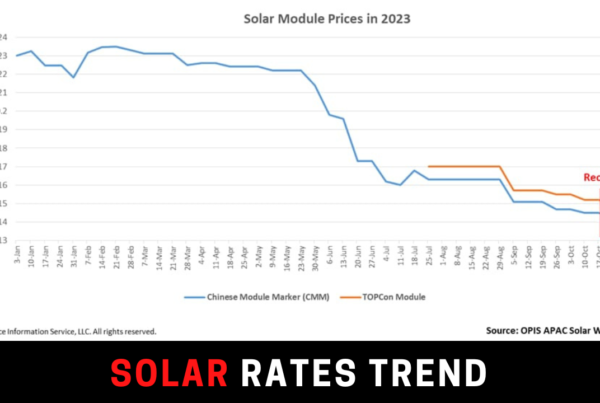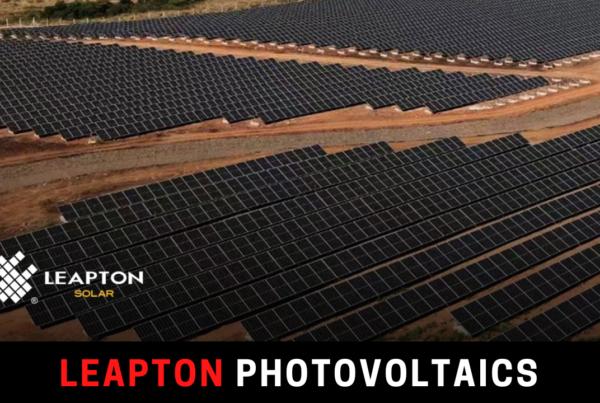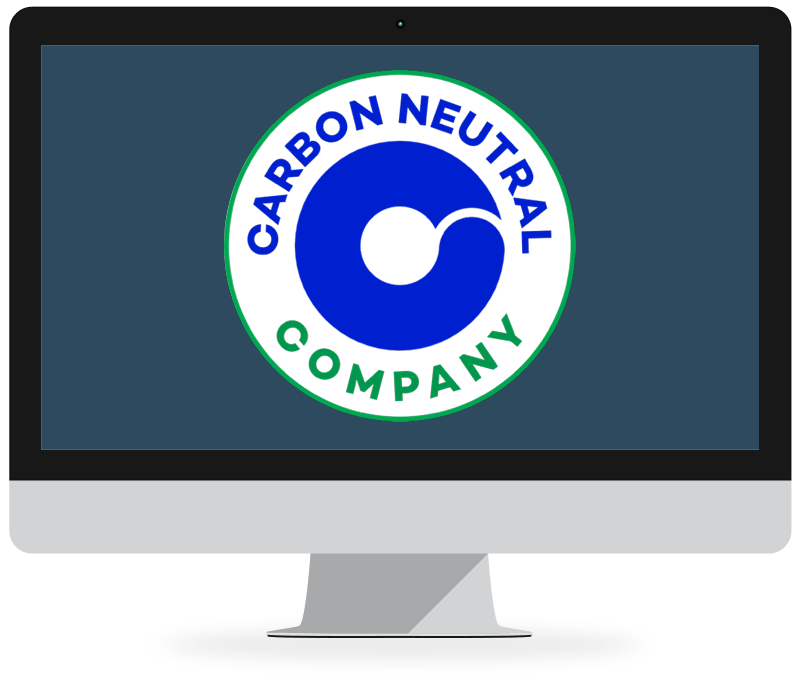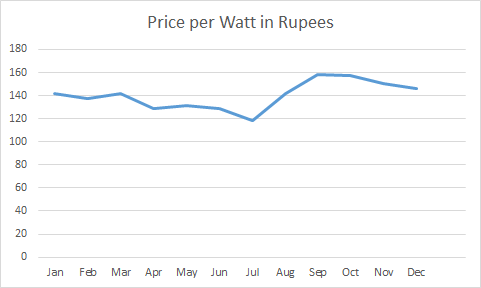
The average price per Watt of solar system remained Rs. 140.2034073 in Pakistan
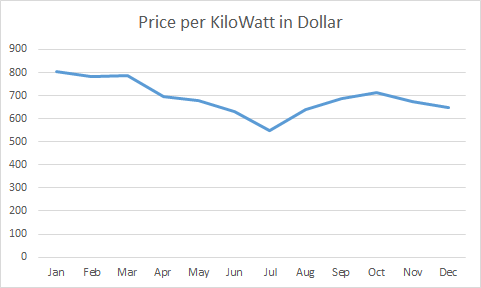
The average price per Kilowatt for the solar system remained $690.6802876 in Pakistan
We studied 228 quotes ranging from 10.00kWp to 10.99kWp with ground mounted, semi-elevated and custom built elevated/hi-rise structures. These quotes were sought from 24 cities including Ali Pur, Bahawalpur, Burewala, Faisalabad, Gujranwala, Gujrat, Islamabad, Karachi, Lahore, Lalamusa, Mandi Bahaudin, Mardan, Mianwali, Multan, Nowshera, Pattoki, Peshawar, Rahim Yar Khan, Rawalpindi, Sahiwal, Sargodha, Sheikhupura, Sialkot, Vehari and some other cities.
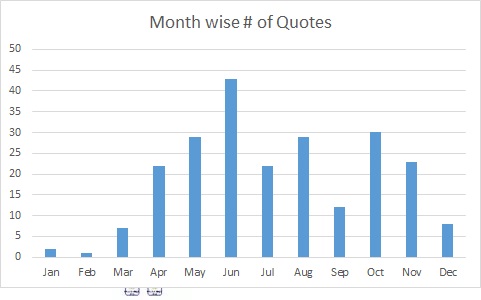
Average Quotes per month: 19
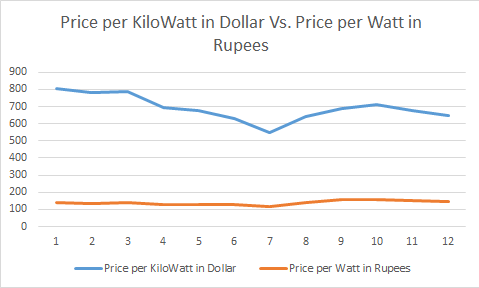
The price per watt in Pak Rupees trendline somewhat follows the price per Kilowatt in Dollar w.r.t. equivalency from the average price when converted with the respective month’s average exchange rate.
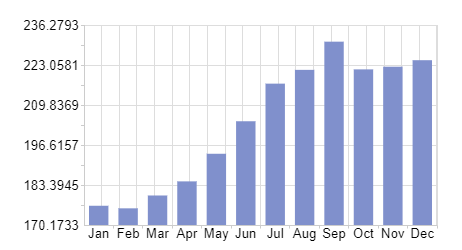
Average: 222.04 PKR over this period. Highest: 240.77 PKR on 24 Sep 2022. Lowest: 204.03 PKR on 30 Jun 2022.
- Jan 176.534683 – 31 days
- Feb 175.682137 – 28 days
- Mar 179.929410 – 31 days
- Apr 184.591842 – 30 days
- May 193.719077 – 31 days
- Jun 204.465974 – 30 days
- Jul 216.898476 – 31 days
- Aug 221.449700 – 31 days
- Sep 230.770431 – 30 days
- Oct 221.611693 – 31 days
- Nov 222.494420 – 30 days
- Dec 224.644631 – 22 days
Here is why the dollar’s worth may not decrease against Pak Rupee, and why this could lead to a decrease in buying power:
First, the exchange rate between two currencies is determined by a number of factors, including the relative supply and demand for each currency, the interest rates set by the central banks of each country, and the overall economic conditions in each country. If the demand for the Pakistani rupee is low relative to the supply, or if economic conditions in Pakistan are not favorable, this could put downward pressure on the value of the rupee against the dollar.
In addition, if the central bank of Pakistan is trying to maintain the value of the rupee at a certain level, it may intervene in the foreign exchange market by buying or selling rupees or dollars. This can help to stabilize the exchange rate, but it can also have the effect of decreasing the buying power of the rupee, as it takes more rupees to purchase a given amount of dollars.
Finally, if the Pakistani government is running a large trade deficit (i.e., importing more goods and services than it is exporting), this can also put downward pressure on the value of the rupee, as the country will need to buy more foreign currency to pay for its imports. This can decrease the buying power of the rupee, as it takes more rupees to purchase a given amount of foreign goods and services.
International Monetary Fund is wanting Govt of Pakistan to increase the per unit electricity cost for Pakistan to 31.60 Rs / kWhr. If you intend to install solar any soon, now is the time. Because the Government would eventually have to increment the per unit cost in order to meet IMF requirements.
It is difficult to predict with certainty what the solar trends will be in 2023, as they will depend on a variety of factors, including technological developments, government policies, and economic conditions. However, some potential trends in the solar industry that could emerge in 2023 include:
- Continued growth and expansion of solar energy: Solar energy has been growing rapidly in recent years, and this trend is likely to continue in the coming years. The cost of solar energy has fallen significantly in recent years, making it increasingly competitive with other forms of energy, and many countries have set ambitious renewable energy targets that are driving demand for solar power.
- Increasing use of solar energy storage: Solar energy storage technologies, such as batteries and pumped hydro storage, allow excess solar energy to be stored and used when needed, rather than being wasted. As solar energy becomes a larger portion of the global energy mix, the use of solar energy storage systems is likely to increase.
- Continued innovation and technological advancement: The solar industry is constantly evolving, and it is likely that new technologies and innovations will emerge in 2023. These could include advances in solar panel efficiency, new solar energy storage technologies, and new financing models for solar projects.
- Increased adoption of solar energy in developing countries: Many developing countries like Pakistan have significant untapped solar energy potential, and it is likely that we will see increased adoption of solar energy in these countries in the coming years. This could be driven by a combination of growing demand for energy, falling costs, and support from international organizations and development agencies.

